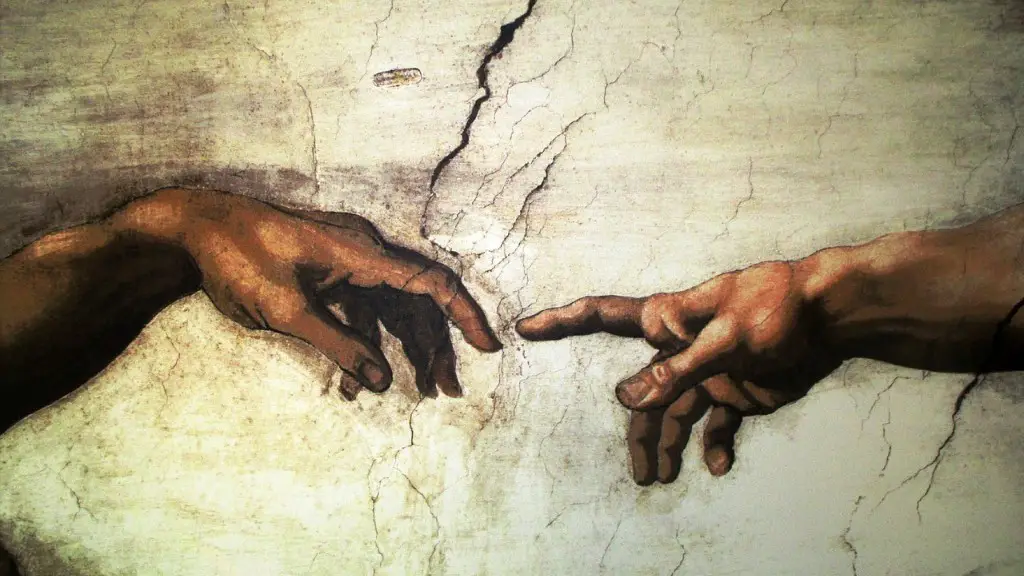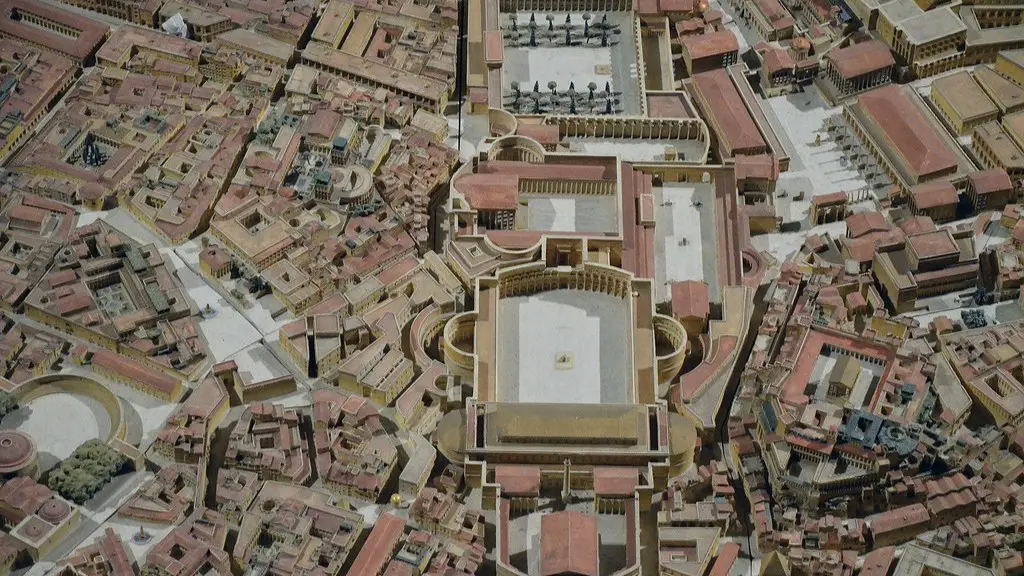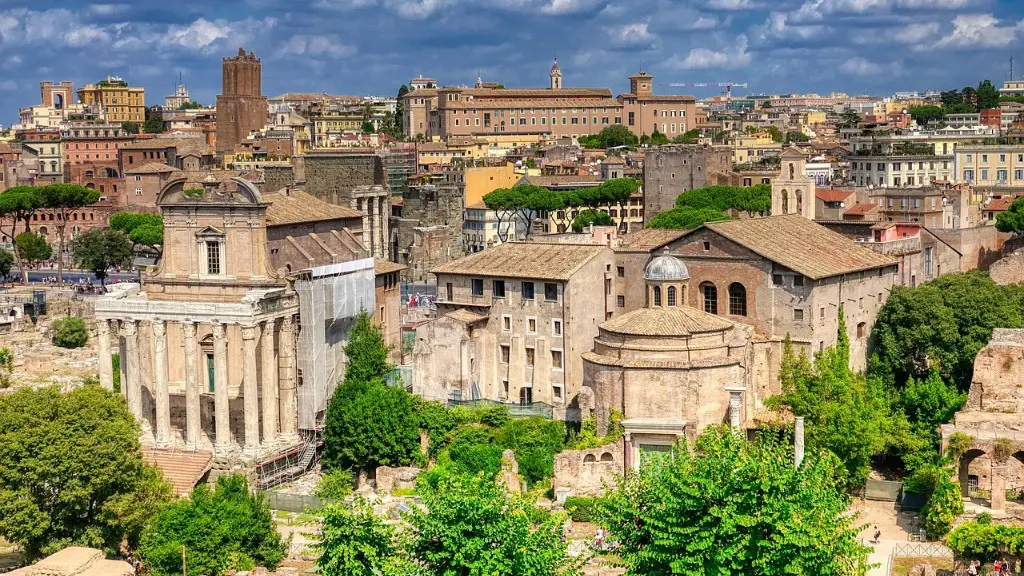The timeline of Ancient Rome has been the subject of much study for historians interested in the rise and fall of powerful civilizations. The story of Rome is a fascinating one, replete with adventures and wars, political intrigue, and art and culture. The chronological timeline of Ancient Rome stretches from around 753 BCE to around 476 CE, when it is estimated that the western half of the Roman Empire fell. This article will provide background information, relevant data and perspectives from experts, and add its own insights and analysis.
The Founding of Rome
The traditional date for the founding of Rome is 753 BCE. According to the Roman legend, twin brothers Romulus and Remus were abandoned on the banks of the Tiber River as infants and were nurtured by a she-wolf. They eventually grew up and founded the city of Rome atop the Palatine Hill. Archaeological evidence seems to indicate that while Romulus may have been responsible for a settlement on the Palatine Hill, Rome may have initially been an Etruscan city. Evidence of Etruscan settlements in Rome has been found dating back to the 8th century BCE.
Early Republic
Rome grew slowly but steadily in power and by the 6th century BCE it was a major power. The government of Rome was originally a monarchy, followed by a period of oligarchy. In 509 BCE, the Roman Republic was formed and the senate came to be the most powerful institution in the city. During the Republic era, Rome faced numerous wars – with the Latins, Etruscans, Greeks, and more – in order to expand their territory. Julius Caesar was named Dictator for life in 44 BCE, effectively ending the Republic and beginning the Imperial Age.
Imperial Age
Julius Caesar was assassinated in 44 BCE and was subsequently followed by a series of emperors, known as the Julio-Claudian Dynasty, who held power until 68 CE. This was followed by a period of four emperors (the Flavian Dynasty) until 192 CE. This was succeeded by the era of the 5 Good Emperors, who ruled until 235 CE. This period is considered to be the peak of Roman power. The 5 Good Emperors were replaced by numerous other rulers until the Western Roman Empire fell in 476 CE.
Cultural and Social Developments
During the height of the Roman Empire, Rome was a thriving economic and cultural center. The Roman government built a vast system of roads throughout the empire, as well as aqueducts for fresh water and a sewer system for waste management. Rome was also home to many intellectual, cultural and religious achievements, including the theatre works of Plautus, the philosophical works of Seneca and Cicero, and the architectural designs of Hadrian’s Villa. The early empire was a polytheistic society, with many of the gods being based on the Greek and Etruscan pantheons.
Decline of the Empire
The period of the 5 Good Emperors marked the peak of Roman power, but this was quickly followed by a period of decline. The Western Roman Empire was weakened by a series of civil wars and invasive enemy attacks, notably by the Visigoths in 410 CE. The empire was further weakened by corruption, economic decline, and its reliance on slave labor. In 476 CE, the Western Roman Empire fell with the abdication of the last western emperor, Romulus Augustus.
The Legacy of Ancient Rome
The legacy of Ancient Rome still lives on today. Its accomplishments in architecture and engineering are evident in the buildings, bridges, aqueducts and roads that still stand. Its legal system of codified laws, based on a written constitution, served as the basis for many modern law codes. Its literature, art, and mythology continue to inspire modern works. The legacy of Ancient Rome is a testament to the power of a civilization that once ruled the world.
External Factors of Roman Decline
Though the Roman Empire gradually declined due to a variety of internal reasons, historians also point to a number of external factors that contributed to its fall. Invasions by the Goths and Vandals resulted in significant losses of territory and wealth. The Plague of Justinian, which spread throughout the Roman Empire in the 6th century CE, also contributed to its decline. Thus, a combination of internal and external problems weakened Rome and set the stage for its eventual fall.
Christianity in Ancient Rome
Christianity was a minority religion during the height of the Roman Empire. It spread quickly throughout the empire, though it was mostly tolerated, rather than accepted. Rome’s attitude towards Christianity changed with Emperor Constantine in the 4th century CE – he adopted Christianity as the official religion of the empire. This allowed Christianity to gain acceptance and even become the dominant religion of Rome. Over time, the legacy of Christianity replaced the legacy of Ancient Rome.
Rome and its Cultural Wealth
Ancient Rome was a cultural and social hub that produced a wealth of literature, art, and architecture. Rome was famed for its amphitheaters, which were used for public entertainment and gladiator tournaments. Rome had a rich tradition of literature, including masterpieces by Virgil, Martial, Ovid, Seneca and Cicero. Rome was also home to famous painters such as Michelangelo, Caravaggio, and Raphael.
Influence of Roman Art, Literature and Culture
The legacy of Roman art, literature, and culture has continued to be felt throughout the world, from Hollywood movies and musical compositions to the architecture of today’s cities. The Latin language, which was the official language of the Roman Empire, is still used today in some parts of the world. Roman literature, particularly that of Virgil, Ovid, and Cicero, has been studied in schools throughout the world and continues to inspire writers today. The Roman Empire’s influence can be seen in much of modern-day culture.
Roman Political and Military Achievements
Though the Roman Empire failed and was eventually replaced by other powers, its political and military achievements remain to this day as some of the most impressive ever seen. Under the Roman Republic, Rome developed a highly sophisticated military, with a professionalized soldiery, formations, tactics, and weapons. Rome also managed to unify the Mediterranean region and expand its political control, though wars and diplomacy. Though the empire did not last, its political and military heritage continues to be studied and celebrated.



